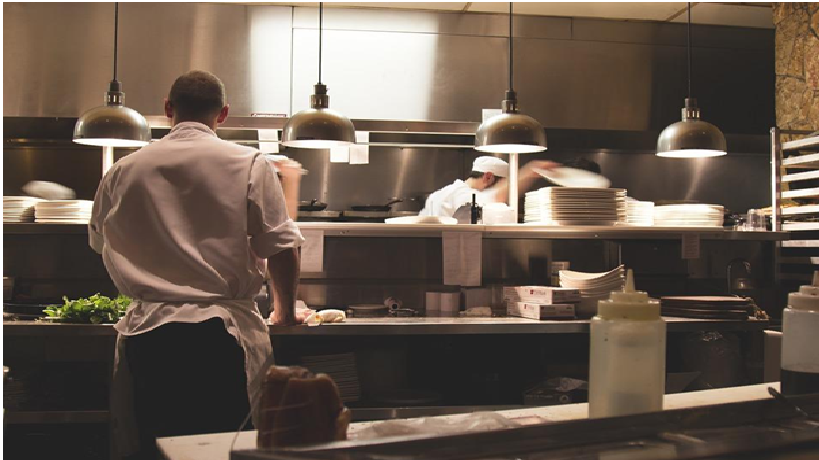Whether you’re opening up a new restaurant or simply thinking about remodeling your existing one, the amount you spend will depend on a variety of factors. Here are a few tips to help you design a commercial kitchen that’s both efficient and easy on your bank account.

Take space into consideration
Are you opening up a mobile food truck, a catering business, or a sit-down restaurant? The type of business you plan to open will determine the space you need for your kitchen. Try to keep this in mind or you risk spending more on space and equipment you don’t really need. Your chef should be consulted during this process, as he or she will know just what their requirements will look like. A good rule of thumb is to offer a minimum of 5 square feet of space in the kitchen for every seat in your restaurant.
Create designated working zones
You can maximise the space in your commercial kitchen by creating specialised work zones. Designate one area for cleaning, one for chopping, and another for frying. This basic concept can be applied to virtually any type of kitchen layout, whether you have a small assembly line or a larger industrial-sized space. This way, you can plan ahead to outfit each area with the necessary equipment and create a more effective budget.
Install energy-efficient fixtures
If you do nothing else, be sure to install appliances that are Energy Star approved to save money. The layout of the kitchen equipment will also impact its efficiency. Group cookers together, using the working zones concept described above. Be sure that there’s adequate ventilation to keep equipment working at its best.
Remember cleaning and maintenance
Will your newly designed kitchen be easy to take care of? You don’t want to shell out on loads of shiny, new equipment only to find that you’re also going to pay a bundle to keep it maintained. Look at materials – for example, stainless steel worktops like these from Euroceppi will be easier to clean and keep hygienic than more porous materials like plastic.
A final tip is to stay flexible with your kitchen design. You can always start out small and then plan to scale up in the future, when your business is bringing in more money. This allows you to trial different themes in your kitchen at lower risk.